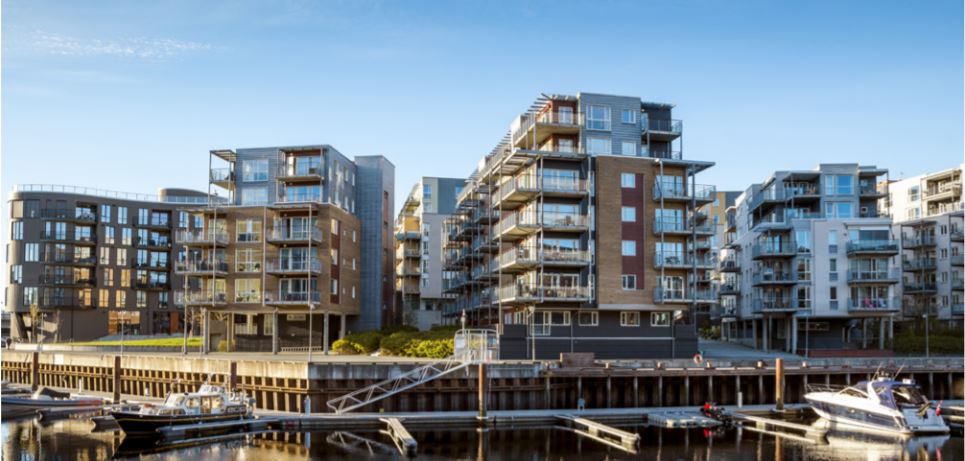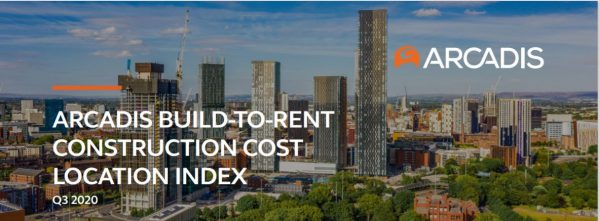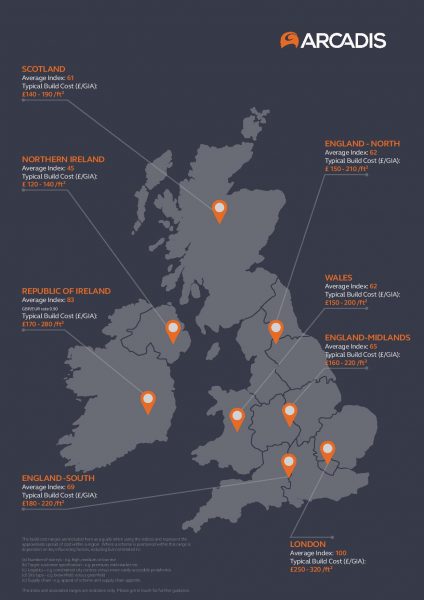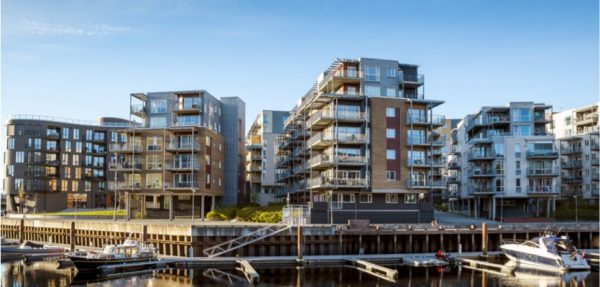
Arcadis publish Q2 BTR construction cost location

Investors are increasingly attracted to build-to-rent (BtR), drawn by the competitive returns and buoyant outlook for the sector. Rental prices are expected to see growth over a five year horizon and the fundamentals of end-customer demand for BtR in both the UK and Ireland are expected to remain strong over the next 12 months and beyond, even with the continued challenges of COVID-19 and the potential for a disorderly Brexit.
At the time of writing, 2020 is expected to see investment in the sector broadly on a par with 2019, which was approximately £4bn across the UK and Ireland. Given the impacts of the COVID-19 crisis, if realised this will represent a good performance, particularly relative to other sectors. The BtR pipeline retains momentum with over 120,000 homes in planning or construction across the UK and Ireland and many clients are reporting expansion plans in the sector.
The impact of COVID-19 triggered a disruption to construction output levels because of temporary site shutdowns and pauses in project decision making. A number of other sectors that regularly draw from the same main and sub-contractor pool as the BtR sector, such as retail and commercial offices, have a more bearish construction demand outlook due to the adverse impacts of COVID-19 on medium to long term investment in those sectors.
As a result, under some scenarios greater supply chain capacity may present the opportunity for construction clients who are able to bring forward de-risked and deliverable projects, to realise lower construction tender prices over the next 12 to 18 months. That said, with high levels of financial fragility in the supply chain, forthcoming disruption associated with Brexit and changes to labour markets, we expect that contractors and their supply chain will take a risk averse approach to business development – focused on quality work rather than work at any cost. There will therefore be a ceiling upon any tender price deflation that may occur.
Our index highlights the construction cost differentials for BtR across the UK and Ireland. Notwithstanding the disruption of COVID-19, London continues to be busy for BtR. Construction cost inflation of recent years had made it difficult to keep costs low under traditional procurement models, which has led to increased focus on self-delivery or joint venture and partnership models. However traditional approaches may become increasingly competitive post-COVID, with supply-side dynamics in flux.
Dublin, Manchester and Birmingham are regional hotspots with costs typically higher than the regional average and showing no sign of slowing down in terms of BtR construction, which may come to strain viability of future potential schemes. BtR activity in Bristol and Leeds is seeing continued maturation, and their cost bases increasingly reflect that. Many clients are now looking to less mature markets including Milton Keynes, Leicester and Newcastle, as well as city fringes, where potential returns are attractive and there exists a strong potential customer base. Cities outside the major regional hubs also offer more diversity in supply chains between larger nationwide contractors and smaller regional firms, increasing competitive tension and helping keep prices down.
In recent months, with a softening of land prices and changing financial outlook, construction costs have come under increased focus as an even more important lever in the BtR viability equation. With the volatility that the next 12 months is expected to bring, this is likely to remain the case. Those that have a firm grasp on construction cost will be well placed to take advantage of the opportunities that the BtR sector is likely to have in the coming years.


About the index
Our construction cost location index has been prepared based on a selected snapshot of our BtR project data, the parameters of which are set out below, correct as at Q2 2020. Note that the location factors are based against London, which is at 100.
Whilst this index may also be applied to other forms of residential tenure, it takes specific account of key influencing
factors in the BtR sector, including supply chain, operator input and branding, amenity space fit out, and a relatively
‘homogenised’ specification which provides more consistency than the ‘for sale’ market.
Note this index represents indicative averages and should not be applied unilaterally. The cost comparison index
represents a snapshot in time and is for illustrative purposes only. Arcadis is not liable for any loss or damages
associated with the use of the index for decision making purposes. All build costs are on an ‘above ground building
only’ basis, including allowance for foundations but excluding basements, external works and site abnormals.
This index is based on a data pool comprising:

Contacts
Arcadis have been involved with the delivery of over 100 BtR schemes over the last five years and work with the majority of the top tier investors, developers and operators in the market. Please get in touch for a further discussion on the market, scheme viability, the BtR product, net-zero carbon and more.

Find out more on the Arcadis website – www.arcadis.com/uk
Disclaimer
This report is based on market perceptions and research carried out by Arcadis, a design and consultancy firm for natural and built assets. This document is intended for informative purposes only and should not be construed or otherwise relied upon as investment, design, construction, or operations advice nor information upon which key commercial or corporate
decisions should be taken. While every effort has been made to ensure the accuracy of this document, it is a snapshot in time and Arcadis is not liable for any loss or damages associated with the use of it for decision-making purposes. This document may contain forward-looking statements. Forward looking statements are those that predict or describe future events or
trends and that do not exclusively relate to historical matters. Actual results could and likely will differ, sometimes materially, from those projected or anticipated. Arcadis undertakes no obligation to update or revise any forward-looking statements, whether the result of new information, future events or otherwise. Additionally, statements regarding past trends are not a
representation that those trends or activities will continue in the future. Accordingly, no one should rely on these statements for decision-making purposes. This document should not be relied upon as a substitute for the exercise of independent judgment and appropriate specialist advice should always be sought on a specific and case by case basis.